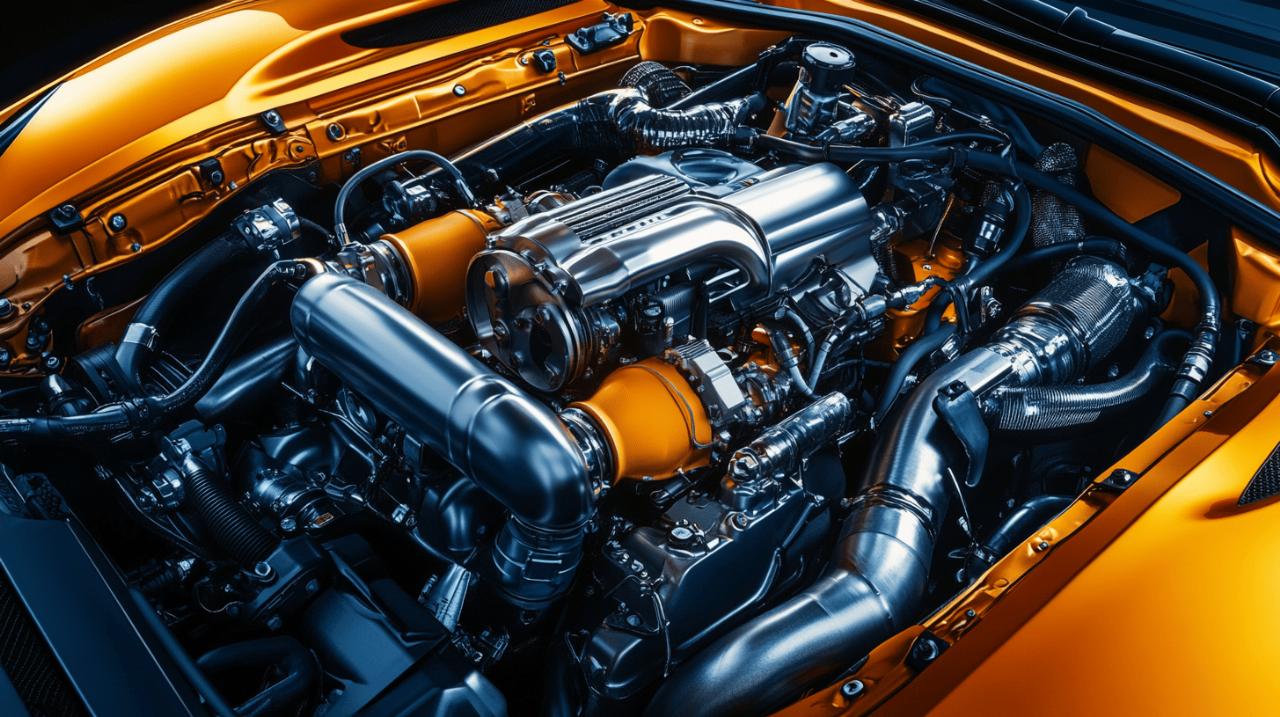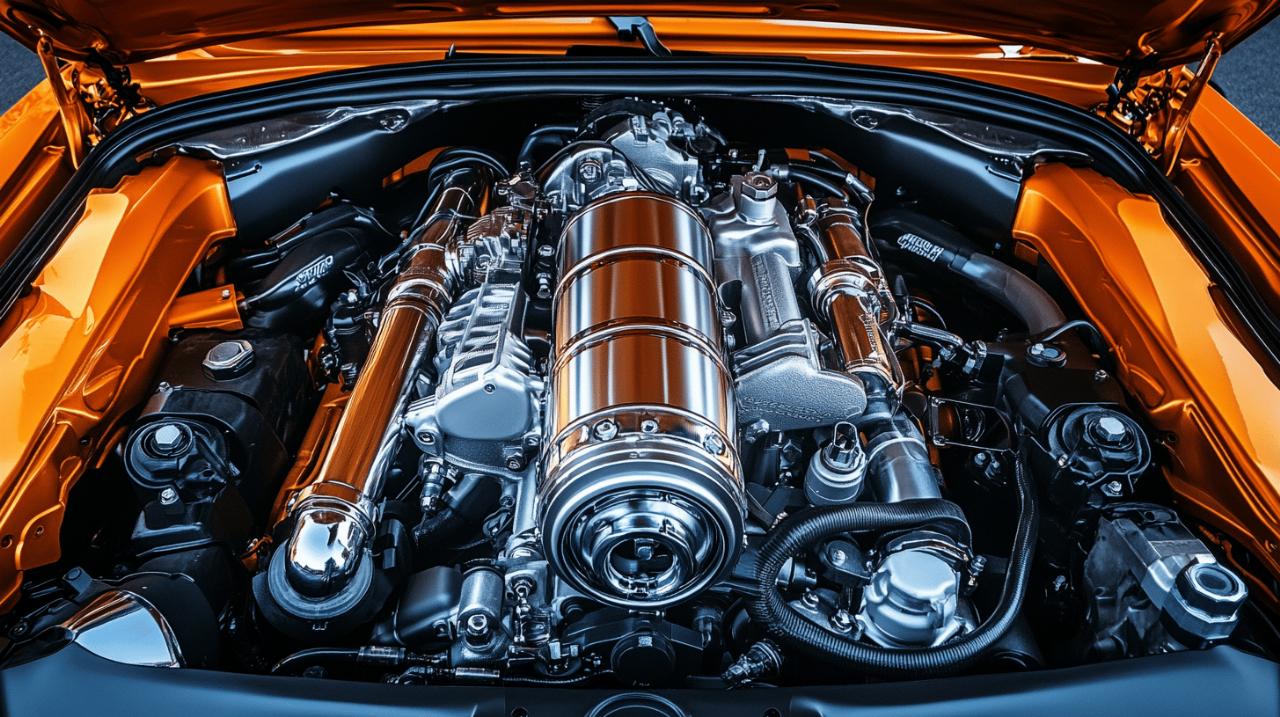
Turbocharging your vehicle can dramatically transform its performance, but selecting the right turbocharger requires careful consideration of multiple factors. Whether you're looking to boost your daily driver or build a competitive track car, making an informed choice will save you both time and money in the long run. Let's explore the essential aspects to consider when choosing the perfect turbo for your automotive needs.
Understanding your car's needs
Assessing your current setup
Before diving into the world of turbochargers, you need to thoroughly evaluate your current engine configuration. Auto Helps recommend conducting a comprehensive assessment of your engine's displacement, compression ratio, and overall condition. The existing fuel system, ignition timing, and exhaust manifold design will all influence which turbocharger will work best with your setup. Taking accurate measurements and documenting your current performance baseline will help you make meaningful comparisons once your new turbo is installed.
Setting realistic power goals
Having clear, achievable performance targets is crucial when selecting a turbocharger. Consider what you want from your vehicle—are you seeking better acceleration for autocross events, increased top-end power for drag racing, or simply a more responsive daily driver? Understanding the difference between wheel horsepower and crank horsepower is important here, as drivetrain loss varies significantly between different layouts: front-wheel drive vehicles typically lose about 10% power through the drivetrain, rear-wheel drive around 15%, and all-wheel drive systems can lose up to 20%. These figures will help you calculate the actual boost needed to achieve your desired performance.
Engine compatibility factors
Engine size and design considerations
The displacement of your engine plays a critical role in determining which turbocharger will provide optimal performance. For smaller engines ranging from 1.8L to 3.0L, different turbo sizes are appropriate based on your power goals. Larger turbos can produce more power but may introduce more turbo lag—that delay before the turbocharger delivers boost. Your engine's internal design, including valve configuration and combustion chamber shape, will also affect how it responds to forced induction. Consider whether your engine was designed with turbocharging in mind or if it will require additional modifications to handle increased pressure.
Matching turbo specifications to your engine
Finding the right balance between turbo size and engine capacity is essential for reliable performance. A turbo that's too small will restrict top-end power but spool quickly, while one that's too large will create significant lag but potentially deliver more power at higher RPMs. Manufacturers like Garrett Motion Inc. offer detailed specifications to help match their turbochargers to specific engine displacements. When reviewing these specs, pay close attention to the compressor map, which shows the efficiency range of the turbocharger across different airflow and pressure ratios, helping you determine if a particular model will operate efficiently with your engine.
Types of turbochargers
Journal bearing vs ball bearing turbos
The bearing system in your turbocharger significantly affects its performance characteristics and longevity. Journal bearing turbos use a film of oil between the shaft and bearing surface, making them more affordable but slower to spool and less efficient at higher RPMs. Ball bearing turbochargers, with their precision roller bearings, offer reduced friction, faster spool times, and better high-RPM efficiency, though at a higher cost. For street applications with moderate power goals, journal bearings often provide sufficient performance, while high-performance builds benefit from the quicker response and durability of ball bearing systems.
Single vs twin turbo setups
Choosing between a single turbocharger and twin turbos depends on your performance goals and engine configuration. Single turbo setups are simpler, less expensive to install and maintain, and often sufficient for moderate power increases. Twin turbo configurations, whether identical turbos (twins) or different sized units (sequential), can provide more power and better response across the RPM range by distributing the work. Sequential setups particularly excel at reducing lag by using a smaller turbo for low-end response and a larger one for top-end power. These systems require more complex plumbing, control systems, and tuning expertise, making them better suited for serious performance builds.
Technical specifications to consider
Understanding boost levels and psi
Boost pressure, measured in pounds per square inch (PSI), directly affects the power your turbocharged engine produces. Most street-oriented setups run optimally between 6 to 10 PSI, providing a noticeable performance improvement without compromising reliability. Higher boost levels require supporting modifications to prevent engine damage. Signs of overboosting include sudden power surges, warning lights, excessive smoke, poor fuel economy, and unusual engine noises. When selecting a turbocharger, consider both its maximum boost capability and the pressure at which it operates most efficiently, as running a turbo outside its ideal range can lead to premature wear or catastrophic failure.
The importance of a/r ratio
The A/R (Area/Radius) ratio is a critical specification that affects how your turbocharger performs across the RPM range. This ratio describes the relationship between the inlet area of the turbine housing and the distance from its center to the center of the inlet area. A lower A/R ratio restricts exhaust flow somewhat but creates faster exhaust gas velocity, resulting in quicker spool-up and better low-end response. Higher A/R ratios allow more exhaust flow at high RPMs, potentially increasing top-end power but with more turbo lag. For street cars that need responsive power delivery, a lower A/R ratio often works best, while drag racing applications might benefit from a higher ratio to maximize top-end performance.
Budget and quality considerations
Price ranges and what you get
Turbochargers vary tremendously in price, from basic units starting around £150 to sophisticated water-cooled or Vband models exceeding £2,000. Entry-level turbos may provide a modest performance boost but often lack durability and precise boost control. Mid-range options between £600-£1,500 typically offer a good balance of performance, reliability, and quality materials. Premium turbochargers incorporate advanced features like water cooling, ceramic ball bearings, or variable geometry technology that provides better response across the RPM range. When establishing your budget, factor in not just the turbocharger itself but also supporting modifications and professional installation if needed.
Balancing cost against performance
Finding the sweet spot between your budget and performance goals requires careful consideration of long-term value. While premium turbochargers from manufacturers like Garrett Motion Inc. command higher prices, they often deliver better reliability, more precise boost control, and longer service life. Consider the total cost of ownership, including potential maintenance and replacement parts, rather than focusing solely on the initial purchase price. For occasional spirited driving, a mid-range turbo might provide the best value, while dedicated track cars or high-horsepower builds generally benefit from investing in higher-quality components that can withstand the added stress.
Research and expert input
Finding reliable reviews and forums
Gathering information from experienced turbo users can provide valuable insights beyond manufacturer specifications. Dedicated automotive forums, social media groups, and product review sections often contain real-world feedback about installation challenges, reliability issues, and actual performance gains with specific turbochargers. Look for detailed reviews from users with similar vehicles and performance goals to your own. Pay particular attention to comments about durability, customer service experiences, and whether the turbocharger delivered the expected performance improvements. This research phase can help you avoid common pitfalls and identify which turbochargers consistently perform well in applications similar to yours.
When to Consult a Professional Mechanic
Even with thorough research, consulting with a professional who specializes in forced induction can save you from costly mistakes. Experienced mechanics can offer personalized recommendations based on your specific vehicle, driving habits, and performance goals. They can also identify potential compatibility issues or necessary supporting modifications that might not be obvious. If you're new to turbocharging or planning a complex build, investing in a professional consultation early in the process is particularly valuable. Many performance shops offer pre-purchase advice and can help you develop a comprehensive plan for your turbo build that addresses all aspects of the project.
Installation requirements
Ensuring physical fitment
The physical dimensions of turbochargers vary significantly, and ensuring proper fitment in your engine bay is essential. Measure the available space carefully, considering not just the turbo itself but also associated components like oil lines, intercoolers, and wastegates. Some vehicles have tight engine bays that may require custom mounting solutions or relocated components to accommodate a turbocharger. Standard and reverse rotation configurations are available for different mounting positions and engine layouts. Creating detailed diagrams of your proposed installation can help identify potential clearance issues before you purchase components, potentially saving significant time and frustration during the installation process.
Exhaust system compatibility
Your exhaust system must be properly matched to your turbocharger for optimal performance. The exhaust manifold design directly affects how exhaust gases reach the turbine, influencing spool characteristics and overall efficiency. For many applications, aftermarket turbo manifolds provide better flow and more convenient turbo mounting positions than factory exhaust manifolds. Downpipe diameter and design are equally important, as restrictions after the turbo can create excessive back pressure and limit power. When planning your turbo installation, consider whether your existing exhaust components can support your power goals or if a comprehensive exhaust system upgrade might be necessary.
Supporting modifications
Fuel system upgrades
Adding a turbocharger significantly increases your engine's air intake, requiring corresponding fuel system upgrades to maintain the proper air-fuel ratio. Depending on your power goals, you may need larger fuel injectors, a higher-capacity fuel pump, or even a complete fuel system overhaul. Fuel pressure regulators help maintain consistent fuel delivery as boost increases, preventing dangerous lean conditions that can damage your engine. The stock fuel system on most vehicles can typically support modest boost levels, but as you approach 50% more power than stock, fuel system upgrades become necessary. Planning these upgrades alongside your turbocharger selection ensures your engine receives adequate fuel under all operating conditions.
Cooling system improvements
Forced induction generates additional heat that must be managed to prevent engine damage. Intercoolers play a crucial role by cooling the compressed air before it enters the engine, increasing density and reducing the risk of detonation. Choosing the right intercooler type (air-to-air or air-to-water) and size depends on your vehicle's configuration and performance goals. Beyond intercooling, you may need an upgraded radiator, oil cooler, or additional cooling fans to maintain safe operating temperatures. Water-cooled turbochargers, which use engine coolant to regulate temperatures, can offer better durability in high-performance applications but require more complex plumbing and integration with your existing cooling system.
Engine management and tuning
Ecu remapping basics
Installing a turbocharger without proper engine management adjustments can lead to poor performance or even engine damage. The stock Engine Control Unit (ECU) isn't programmed to handle the changed air-fuel requirements of a turbocharged engine. Remapping involves adjusting parameters like fuel delivery, ignition timing, and boost control to optimize performance and safety. Modern vehicles typically require professional ECU tuning, though some aftermarket management systems offer user-adjustable parameters. The complexity of the tune depends on your specific setup, with higher boost levels and supporting modifications requiring more sophisticated management solutions to ensure reliable operation under all conditions.
Dyno tuning vs road tuning
The method used to tune your turbocharged engine affects both performance and safety. Dynamometer (dyno) tuning allows precise measurement of power output and air-fuel ratios across the RPM range in a controlled environment. This approach enables fine adjustments without road variables and provides documentation of your performance gains. Road tuning, while less precise, tests the vehicle under real-world conditions and may reveal issues that don't appear on a dyno. For most turbo installations, a combination approach works best: initial setup and safety parameters on a dyno, followed by refinement during road testing. Regardless of method, working with an experienced tuner who understands turbocharged engines is essential for extracting maximum performance while maintaining reliability.


